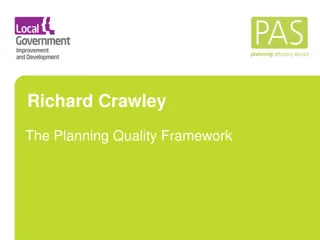Changes to Town and Country Planning Law: Impact on Canterbury
Explore the recent changes to town and country planning law and their implications for Canterbury. Topics include the new use class, rights for building extensions and demolitions, and the proposed major changes outlined in the Planning White Paper. Understand the shifts in use classes before and after September 1st, 2020, and how they affect various types of establishments.
Download Presentation

Please find below an Image/Link to download the presentation.
The content on the website is provided AS IS for your information and personal use only. It may not be sold, licensed, or shared on other websites without obtaining consent from the author. Download presentation by click this link. If you encounter any issues during the download, it is possible that the publisher has removed the file from their server.
E N D
Presentation Transcript
Town and Country Planning Changes to Planning Law The Impact on Canterbury 17th November 2020 Lee May Brachers.co.uk | 01622 690691
Topics for Discussion 1. Changes to the Planning Legislation New Use Class - Class E and what this means for town and city centres? Rights to extend certain buildings upwards. Rights to demolish certain types of buildings and replace them with housing. 2. The Planning White Paper Major changes proposed to the planning system.
Changes to Use Classes A quick recap. Planning permission is required for the carrying out on land of any development : building, engineering, mining or other operations in, on, over or under the land or the making of any material change in the use of any buildings or other land Town and Country Planning (Use Classes) Order 1987 Specifies various Use Classes e.g. Class C1 (hotels, boarding and guest houses). A change of use within the same use class does not constitute development and therefore does not require planning permission NB: Sui Generis i.e. uses not within a use class.
Use Classes Before 1st September 2020 Class Use (examples) A1 - Shops Retail Sale of Goods, Post Office, Travel Agent, Hairdresser, Funeral Director, Internet Caf . A2 - Financial and professional services Banks, Building Societies, Estate Agents. Services must be provided principally to visiting members of the public. A3 - Restaurants and Caf s Sale of food and drink for consumption on the premises A4 - Drinking Establishments Pub, Wine Bar. A5 - Hot Food Takeaways Sale of hot food for consumption off the premises B1 - Business Offices, R&D of Products and Processes, Light Industrial B2 General Industrial Industrial processes that do not fall within use class B1 B8 Storage and Distribution Warehouses, Distribution Centres
Use Classes Before 1st September 2020 . . . . continued Class Use (examples) C1 - Hotels Hotel, Boarding house, Guest house C2 Residential Institutions Hospital or Nursing Home, Residential School, College or Training Centre C2A - Secure Residential Institutions Prison, Secure Hospital, Military Barracks C3 Dwelling House A single person/household. Also, up to 6 people living together as a single household C4 - HMO For up to 6 people D1 - Non-residential institutions Medical Centre, Creche, School, Art Gallery, Museum, Library, Public Worship or Religious Instruction, Law Court. D2 Assembly and Leisure Cinema, Concert Hall, Bingo Hall, Dance Hall, Swimming, Skating, Gym, Indoor or Outdoor Sport and Recreation
Changes to the Use Classes 1st September 2020 The Town and Country Planning (Use Classes) (Amendment) (England) Regulations 2020
Changes to the Use Classes 1st September 2020 Abolished Use Classes - A1, A2, A3, A4, A5 Abolishes Use Class - B1 Abolished the Use Classes D1 and D2 Amended the range of Sui Generis Uses Introduced new Use Classes: E - Commercial, Business and Service F1 - Learning and Non-Residential Institutions F2 Local Community
New Use Classes From 1st September 2020 Class E - Commercial Business and Services What uses are within new Class E? For the display or retail sale of goods other than hot food principally to visiting members of the public. For the sale of food and drink principally to visiting members of the public where consumption of that food and drink is mostly undertaken on the premises. For the provision of the following kinds of services principally to visiting members of the public: Financial services. Professional services (other than health or medical services). Any other services appropriate in a commercial, business or service locality. For indoor sport, recreation or fitness, not involving motorised vehicles or firearms, principally to visiting members of the public.
New Use Classes From 1st September 2020 Class E - Commercial Business and Services For the provision of medical or health services, principally to visiting members of the public, except the use of premises attached to the residence of the consultant or practitioner. For a creche, day nursery or day centre, not including a residential use, principally to visiting members of the public. For: an office to carry out any operational or administrative functions; research and development of products and processes; or any industrial process being a use, which can be carried out in any residential area without detriment to the amenity of that area by reason of noise, vibration, smell, fumes, smoke, soot, ash, dust or grit.
New Use Classes From 1st September 2020 Class F1 - Learning and non- residential institutions What uses are within new Class F1? For the provision of education, For the display of works of art (otherwise than for sale or hire), As a museum, As a public library or public reading room, As a public hall or exhibition hall, For, or in connection with, public worship or religious instruction, As a law court
New Use Classes From 1st September 2020 Class F2 Local Community Use What uses are within new Class F2? A shop mostly selling essential goods, including food, to visiting members of the public in circumstances where the shop's premises cover an area not more than 280 square metres, and there is no other such facility within 1000 metre radius of the shop's location, A hall or meeting place for the principal use of the local community, An area or place for outdoor sport or recreation, not involving motorised vehicles or firearms, An indoor or outdoor swimming pool or skating rink.
Use Classes From 1st September 2020 Up to 31st August 2020 From 1st Sept 2020 Class B2 General Industrial Industrial processes that do not fall within use class B1 No Change B8 Storage and Distribution Warehouses, Distribution Centres No Change
Use Classes From 1st September 2020 . . . . continued Up to 31st August 2020 From 1st Sept 2020 Class C1 - Hotels Hotel, Boarding house, Guest house No Change C2 Residential Institutions Hospital or Nursing Home, Residential School, College or Training Centre No Change C2A - Secure Residential Institutions Prison, Secure Hospital, Military Barracks No Change C3 Dwelling House A single person/household. Also, up to 6 people living together as a single household No Change C4 - HMO For up to 6 people No Change
Use Classes From 1st September 2020 Up to 31st August 2020 From 1st Sept 2020 Class A1 Shops Retail Sale of Goods, Post Office, Travel Agent, Hairdresser, Funeral Director, Internet Caf . E Commercial and Business Services A2 Financial and Professional Services Banks, Building Societies, Estate Agents. Services must be provided principally to visiting members of the public. E Commercial and Business Services A3 Restaurants and Cafes Sale of food and drink for consumption on the premises E Commercial and Business Services B1 - Business Offices, R&D of Products and Processes, Light Industrial E Commercial and Business Services D1 Non Residential Institutions Medical Centre, Creche, Clinics, day centres/nurseries E Commercial and Business Services D2 - Leisure Gym, Indoor Recreation not involving motorise vehicles or firearms E Commercial and Business Services
Use Classes From 1st September 2020 . . . . continued Up to 31st August 2020 From 1st Sept 2020 Class D1 - Non-residential institutions School, Art Gallery, Museum, Library, Public Worship, Law Court. F1 Learning and non-residential institutions A1 - Shops Shops not more than 280sqm mostly selling essential goods and at least 1km from another similar shop F2 Local Community Use D2 Assembly and Leisure Hall or Meeting Place for the principal use of the local community F2 Local Community Use D2 Assembly and Leisure Indoor or outdoor swimming baths, skating rinks and outdoor sports or recreations not involving motorise vehicles or firearms F2 Local Community Use
Additional Sui Generis from 1st September 2020 Up to 31st August 2020 From 1st Sept 2020 Class A4 - Drinking Establishments Pub, Wine Bar. Sui Generis A5 - Hot Food Takeaways Sale of hot food for consumption off the premises Sui Generis D2 Assembly and Leisure Cinema, Concert Hall, Bingo Hall, Dance Hall Sui Generis NB for the full list of Sui Generis see Article 3(6) of the Use Classes Order 1987
Some Examples and Issues Now possible to convert a Shop into a Caf or Gym without planning permission. Will this result in more coffee shops? Loss of retail? What falls within the category of: Any other services appropriate in a commercial, business or service locality ? Planning Policy Guidance 18th Sept Para 36 Cannot use an Article 4 Direction to restrict the operation of the use classes order. Impact on LPA policies for protecting town centres? Will greater flexibility for out of town centres (e.g. converting an old B1 use into a retail unit) make it harder to protect town centres?
Changes to Permitted Development Rights Another quick recap. Planning permission is required for the carrying out on land of any development : building, engineering, mining or other operations in, on, over or under the land or the making of any material change in the use of any buildings or other land Town and Country Planning (General Permitted Development) Order 2015 Automatically grants planning permission for certain forms of development in certain circumstances and subject to conditions and certain limitations.
Changes to Permitted Development Rights (1) The Town and Country Planning (Permitted Development and miscellaneous Amendments) (England) (Coronavirus) Regulations 2020 (SI 2020/632). Includes new permitted development rights to Introduces rights to construct of new dwellings on detached blocks of purpose-built flats. Does not apply to (for example): Buildings constructed before 1st July 1948 or after 5th March 2018 National Parks, areas of outstanding natural beauty and conservation areas SSSI or Listed Building, Scheduled Ancient Monument Subject to Prior Approval Process
Changes to Permitted Development Rights (2) The Town and Country Planning (General Permitted Development) (England) (Amendment) (No. 2) Order 2020 (SI 2020/755). Introduces rights to extend certain buildings upwards including construction of new dwellings above commercial, mixed use or residential premises. Does not apply to (for example): Buildings constructed before 1st July 1948 or after 5th March 2018 National Parks, areas of outstanding natural beauty and conservation areas SSSI or Listed Building, Scheduled Ancient Monument Subject to Prior Approval Process
Changes to Permitted Development Rights (3) The Town and Country Planning (General Permitted Development) (England) (Amendment) (No. 3) Order 2020 (SI 2020/756). Introduces rights to demolish certain types of buildings (block of flats or B1) and replace them with housing (flats or detached dwellinghouse). Does not apply to (for example): Buildings constructed before 1st July 1948 or after 5th March 2018 National Parks, areas of outstanding natural beauty and conservation areas SSSI or Listed Building, Scheduled Ancient Monument Subject to Prior Approval Process
Legal Challenge to Changes in Legislation The changes are subject to legal challenge in the High Court on various grounds: Failure to carry out a Strategic Environmental Assessment. Failure to comply with the public sector equality duty. Failure to take proper account of the responses to consultation, or the government s own specialist advice. Heard October 2020 Judgement Reserved.
The Planning White Paper Planning for the Future Radical Changes Proposed to Planning. Consultation ran from 6th August to 29th October 2020. The paper sets out 24 proposals (within three pillars) and aims to "radically reform" the planning system: Planning for development (Pillar One). Planning for beautiful and sustainable places (Pillar Two). Planning for infrastructure and connected places (Pillar Three).
The Planning White Paper Zoning? All areas of land in England to be classified as either: Growth Areas: Land which is suitable for "substantial development". Substantial development will be defined in policy. These areas will have the benefit of outline planning permission. Sub-areas will be identified for self and custom-build homes. Renewal Areas: Land which are "suitable for development". Renewal Areas will cover existing built areas where smaller scale development is appropriate. There will be a statutory presumption in favour of development being granted for specified uses. Protected Areas: Land subject to more stringent controls. For example, green belt, areas of outstanding natural beauty (AONBs), conservation areas, local wildlife sites, areas of significant flood risk and important areas of green space.
The Planning White Paper Housing Figures Introduction of a standard method for establishing housing requirement figures. A means of distributing the national annual housebuilding target having regard to: The size of existing urban settlements. The relative affordability of places. The extent of land constraints in an area. The opportunities to make better use of existing brownfield land for housing. The need to make an allowance for land required for other (non- residential) development. The inclusion of an appropriate buffer.
Planning White Paper Beautiful and Sustainable Places Local Design Codes and Guidance. National expert body to help local authorities make effective use of design codes. Exploring whether: suitably experienced architectural specialists can have earned autonomy from routine listed building consents.
The Planning White Paper Infrastructure Replacing s.106 Agreements and CIL with a new Infrastructure Levy . A flat-rate, valued-based charge, set nationally, at either a single rate, or at area-specific rates. Revenues will be collected and spent locally . Affordable Housing using the Levy to fund affordable housing. Mandatory in kind delivery on site.
Any Questions Lee May Brachers LLP 01227 949547 Brachers.co.uk | 01622 690691









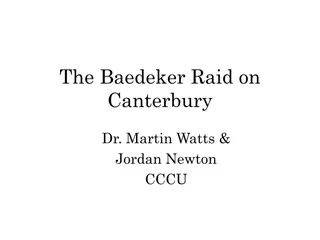
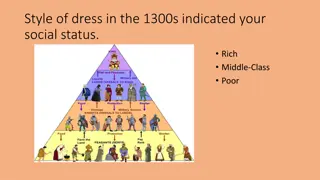
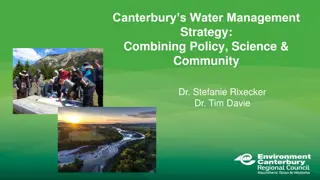






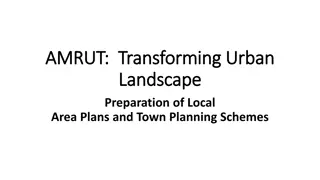
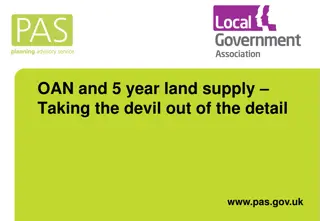



![Town of [Town Name] Real Estate Tax Rates and FY 2024 Budget Summary](/thumb/62211/town-of-town-name-real-estate-tax-rates-and-fy-2024-budget-summary.jpg)
